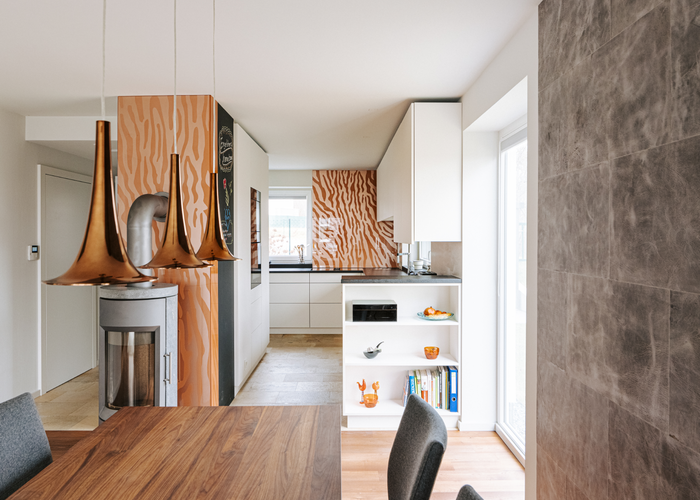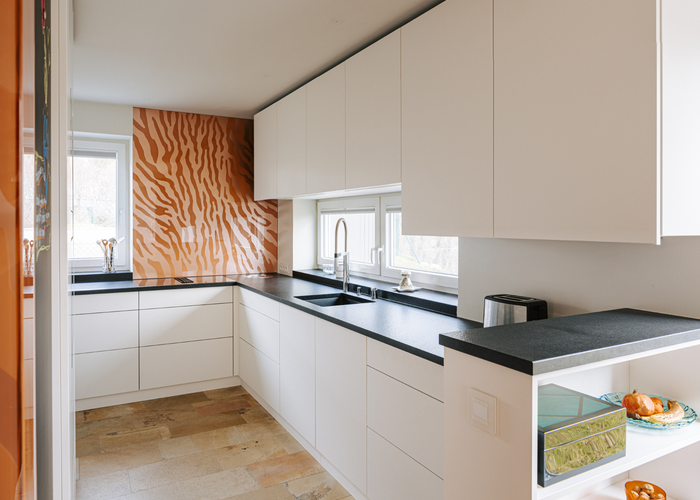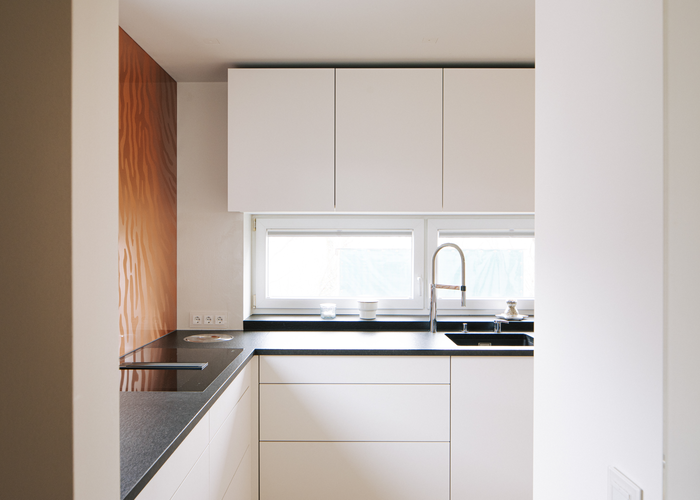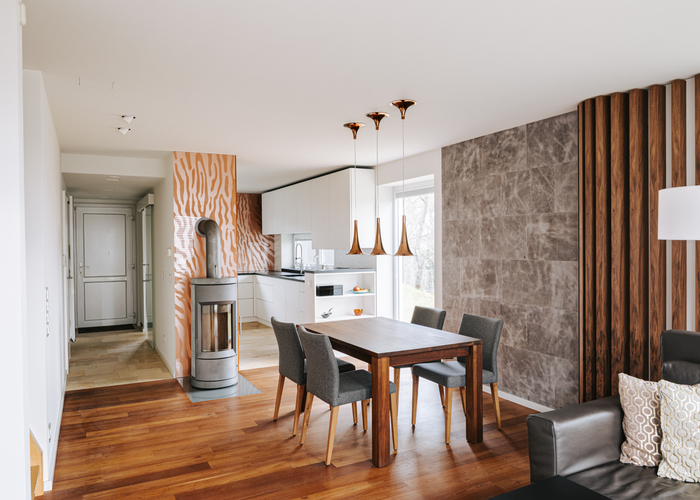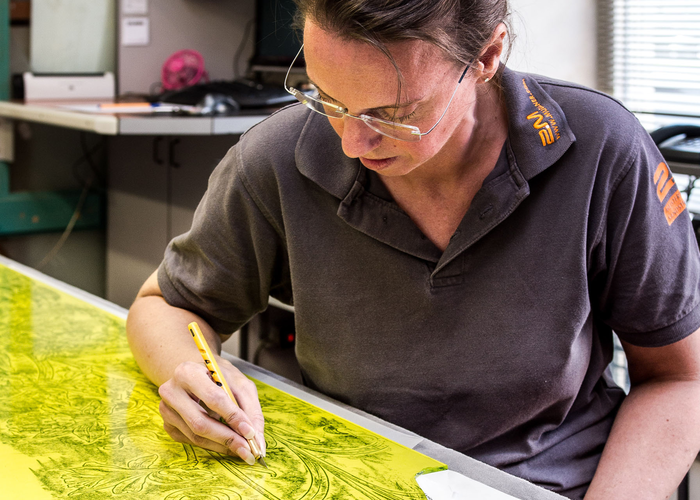
The best of both worlds
On the one hand a specialist sandblasting company from his mother's side of the family, on the other, the joinery founded by his father – what can you do with such an inheritance? Utilise the joint potential! At least that's what Viennese master carpenter Michael Müllner decided to do. He has developed the two traditional family businesses into the creative and design workshop 2M, which realises extraordinary projects – from freehold apartments in Vienna to trade fair designs in Dubai, Paris, Hamburg and Los Angeles.
Effect of depth
Artistically designed glass elements have a long tradition in Viennese Art Nouveau architecture. Originally produced using the technique of etching, the glass is nowadays usually sandblasted: the pattern is transferred onto a film, partly by hand and partly by digital means, and the recessed areas are then processed with a special granulate. However, historical designs, for example for renovations, are now only a side issue at 2M. The company's innovative showpiece is called "Visual Haptic": glass is deep-blasted using a special technique, with structures up to 8 mm deep and, in some cases, a multi-coloured paint coating. But why the name "Visual Haptic"? Müllner explains: "The side of the glass that is on show is untreated and feels beautifully smooth. You can see through the glass to the sandblasted reverse side, which creates a special effect of depth." The painted finish also contributes to this effect, and for this Müllner likes to use ADLER's 2C furniture paint Pigmopur-Metallic, which has excellent properties of adhesion when used on glass. The paint is applied in the reverse order, so to speak¬: "As you can see the painted surface from behind, we first coat it with Pigmopur-Metallic and only then apply the 'primer' – depending on the colour of this second layer, a wide range of different shades can be created," explains Müllner.
Design repertoire
These "Visual Haptic" glass elements are used for interior projects, in TV studios and on trade fair stands all over the world, but also for smaller furnishing projects. For example, a kitchen/living room in Vienna was given a spectacular and eye-catching design feature with two "Visual Haptic" glass elements. The starting point for the design, which Müllner developed together with the client, was the existing walnut dining table set with copper ceiling lights. This copper look found its way onto the glass with a "tailor-made" sequence of coatings: the surface was first coated with Pigmopur-Metallic Copper and then with the coloured paint Pigmopur in a special shade in order to achieve the exact desired colour, with the sandblasted structure creating a striking colour contrast. While the glass pattern picks up on the lively grain of the wood, the minimalist, linear design of the kitchen – coated with ADLER Pigmopur in White in a smooth, gloss finish – brings calm to the room. Müllner formed a transition between the dining and living areas with a "wave" of floor-to-ceiling wall strips, whose walnut veneer creates a multi-layered play of colours. A combination of calm white and lively walnut also gives the room its finishing touch: a masterfully crafted piece of hi-fi furniture which has been given an elegant, matt surface through coating with ADLER Pigmopur White and its colourless counterpart Aduro Legnopur. Glass, metal and wood, cool white and warm brown, playful structures and straight lines: the room designed by 2M draws on the entire repertoire of furniture design and combines the various elements into one harmonious unit through a convincing overall concept.
© by adler-lacke.com
